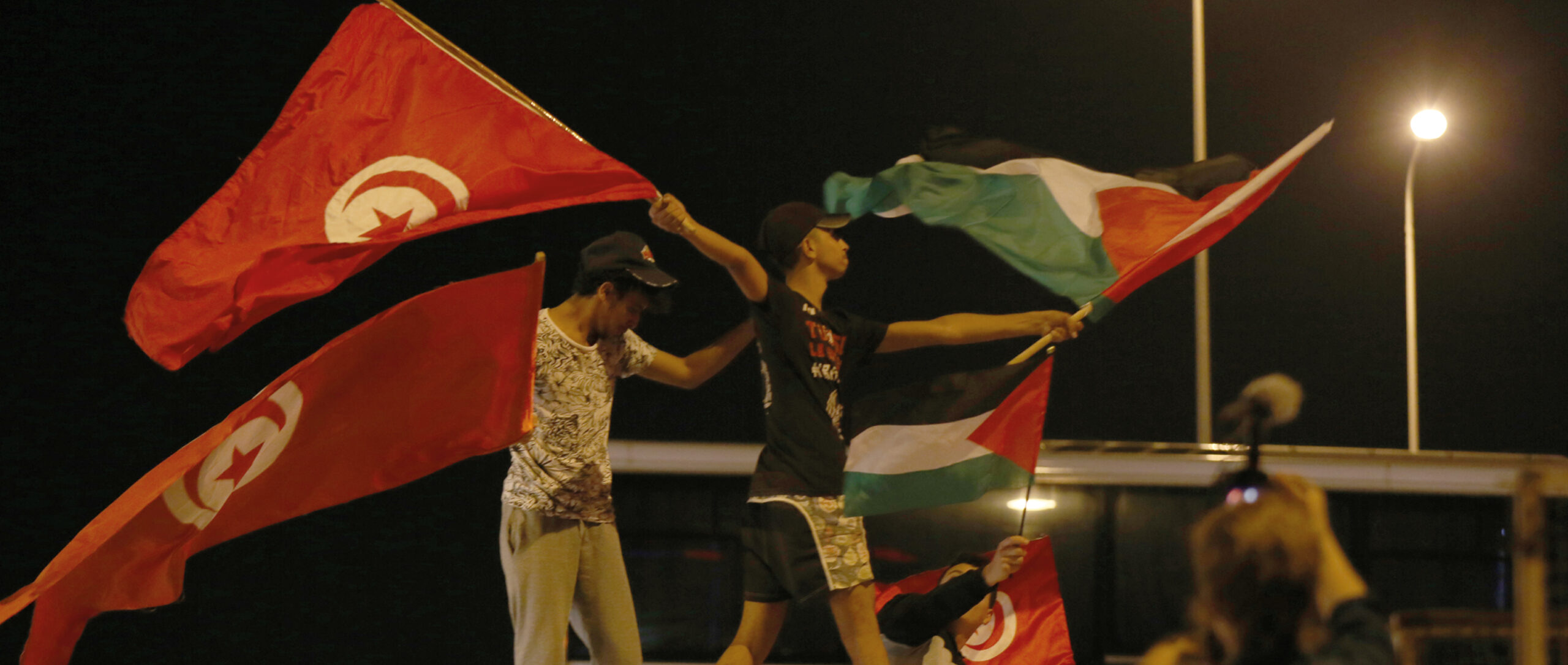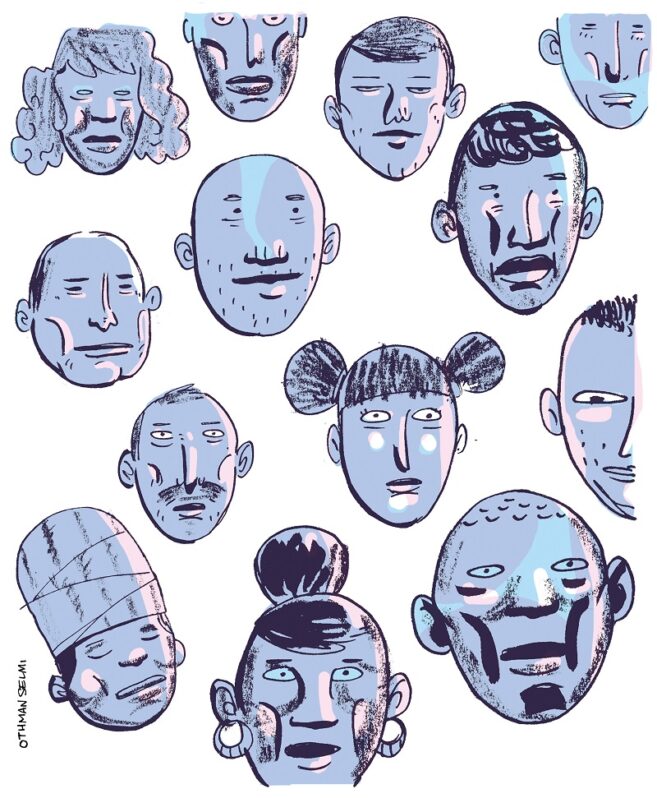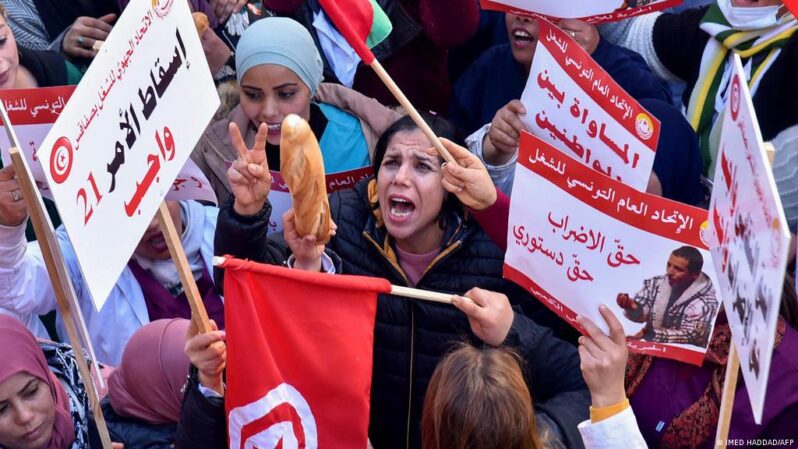Social Analyst Maher Hanin on Tunisian Electoral Bases and Results

The surprise in the two rounds of presidential elections on September 15 and October 13, 2019, was not just that Kais Saied arrived in Carthage Palace, displacing his opponents from the ruling parties and the political factions that have been at the front of the political theatre over the past five years. Rather, the electoral base that brought Saied to the presidency was a hot topic for journalism and academic research. Dissecting this social base, which is diverse to the point of contradiction, and understanding the implications of the numbers and balances resulting from the latest elections was the focus of this interview with political philosophy and sociology researcher Maher Hanin. The interview went beyond analyzing the past and present to look behind the results to discern the features of the coming stage.
The Legal Agenda: After the municipal elections experience, where abstention reached approximately 65%, was an electoral flurry like the one we witnessed in the presidential elections in particular to be expected?
Maher Hanin: Firstly, let’s address the issue from a sociological perspective. At every stage following an authoritarian or despotic era, societies very naturally witness ebbs and flows with regard to occupying public space, the social role of politics, or public life and participation in political life. This appears on the level of the media, membership in associations and parties, and cultural movement, and it undoubtedly also appears in elections.
The relationship with elections is part of a general relationship that society forms with such structured groups, such as party or union organizations, youth movements, and the press, or even with individuals. Society’s relationship with elections oscillates as hope returns at times and a general sense of hopelessness and frustration prevails at others. But generally, we can consider Tunisia’s elections experience a success in comparison with similar experiences in the region, despite all the criticisms and deficiencies from which we suffer. Ultimately, we are not living in a well-established democracy. But what’s certain is that change via recourse to the [ballot] box has become one of the axioms for building peaceful relations within society, and accepting elections, accepting participation in them, accepting their results, and accepting their mechanisms has more or less become a common denominator among the various intellectual and political schools, albeit to varying degrees.
Returning to the surprise of the electoral flurry in autumn 2019, we cannot separate the phase following the 2014 elections from the latest elections. The polls and all the impressions and analyses after 2014 confirmed the existence of much hope that political stability would arise after the establishment of the new Constitution as a segue into the second stage of the process of democratic transition. However, the course of events subsequently caused a general state of disappointment, which appeared in multiple forms consisting of the rapid disintegration of the balance of power in the political landscape after Nidaa Tounes collapsed and fragmented into a group of parties, Ennahdha became more or less unparalleled with the most significant parliamentary bloc, and the other parties were unable to form a united radical democratic coalition. The crisis within the Republican Party and the [Social Democratic] Path party also continued, extending to the Popular Front.
The state of disappointment was not limited to the parties as even the new social movements that had risen significantly were not able to transition to the political arena and present themselves as a serious alternative. Hence, it was natural for society’s faith in the credibility and effectiveness of the ballot box as a sole mechanism of change to decline. However, the municipal elections, as the first local elections, restored hope on two levels: firstly, the local voter would elect a local official directly. This was a new development. The voting process no longer necessarily produced a distant representative democracy; rather, this time it produced what could be called close-proximity representation amidst the people’s need for an authority close to their many problems and needs. The second development was the broad participation of independent lists in the municipal elections. They played an active, mobilizing role that helped establish incubators of a new kind of voter, especially in the capital’s large suburbs, such as La Marsa, Ariana, and El Mourouj, restoring hope for the voters.
After the municipal elections, when the turnout was not exceptional, the moderate turnout continued during the legislative and presidential elections in their first round. However, what could be called the “electoral flurry” occurred during the second round of the presidential race. This phenomenon bore two surprises. The first was the turnout. The second was the political message and the results that it produced, one of the most important characteristics of which was the enormous difference in the number of people who voted for Saied and the number who voted for his opponent, Nabil Karoui. This gulf was the result of the presence of a new theme polarizing the two sides, namely integrity, uprightness, and the adoption of the revolution’s discourse. This theme replaced the old polarization dynamic that existed during the 2011 and 2014 elections, namely the clash of identities between Islamists and secularists, to which citizens were averse.
LA: Kais Saied came to the presidency with approximately 3 million votes. How can this enormous turnout to vote for him be interpreted? Is there a difference between those who voted for him in the first round (600,000) and those who voted for him in the second round (1.7 million)?
Hanin: Firstly, that Saied reached the second round is in and of itself remarkable for several reasons. He had no long, well-known history either in politics or civil society. He was not a rights advocate or a political activist. He was just a university professor respected in the academic sphere by students and colleagues, and he only appeared in the public sphere after 2011 via media interviews, in which he expressed his positions on legal and occasionally political issues. However, his success passing the first round of presidential elections showed that the base rallied around him is a new, non-partisan political phenomenon more closely related to what is called “horizontalism”, and likewise related to the passion and symbolic capital that he represents to his initial voters.
In the second round, the parameters changed, and the grounds of distinction changed to produce a new dichotomy to polarize society. During that period, society witnessed a sharp divide that was reflected clearly in the media’s discourses and orientations and reflected demographically among the youth, particularly the educated among them. It also appeared in the dynamic of the return of the discourse of protest and revolution and then the intersection of a group of sources of support that saw in Saied’s victory relative support for their capital. Hence, Saied’s electoral value is composite, not unitary, and cannot be reduced to the triumph of an ideological line, political history, or reform movement with charters and intellectual references.
LA: What are the most important features of this enormous electoral base? What can we conclude by dissecting it with regard to age, education, and region?
Hanin: Firstly, we should acknowledge that Saied’s election did not have a regional character, unlike former president Mohamed Moncef Marzouki. Except for Zaghouan Governorate, where he obtained the least votes, and Tataouine Governorate, where he obtained his highest number, the results of the ballot did not vary from the national percentage that he obtained. Hence, Saied’s support did not come from a particular region or from particular regional or tribal affiliations at the expense of others. This is commendable because he did not craft his victory on the basis of a regional confrontation or geographical split. Saied also tried to form a discourse that unites the middle class and poor class, which was reflected in the convergence between his election results in working-class and middle-class neighborhoods.
As for the new parameter, it is the youth vote, particularly among the educated youth. In this regard, we cannot deny that the youth turnout was generally low. However, the youth vote made the difference. Saied obtained the largest share of the votes of the portion of youth who went to the voting centers. This parameter is extremely important because, firstly, it reflects the desire for change among the youth and, secondly, because every non-politicized youth supporter that had been dealing with political affairs from outside the classic frameworks found in Saied’s discourse something that resonates with them and motivates them. This tendency appears in the stances of many Manich Msamah [We Will Not Forgive] activists and Ultras groups (youth groups belonging to sports clubs), who issued joint statements calling for people to vote for Saied or who went to the voting centers on the day of elections with football team shirts and youth campaign shirts, some entering the voting booth for the first time in their lives. Even the large celebration that Habib Bourguiba Avenue and some of the chants and slogans raised at the time confirm that the demographic dimension played a pivotal role in the election results.
The second parameter that I believe is also important is primarily moral. Here, I mean the symbolic capital that Saied represented in the minds of his voters, especially in the second round of the presidential elections, i.e. the image of the guarantor of a more “ethical” political life who would correct the revolution’s course towards value-based change that transcends the traditional concept connected to institutional change.
As for the third parameter, namely the idea of decentralization and reengineering the political system, in reality I cannot say for sure whether it was effective, and I do not claim that there are studies that have shown its impact on the electoral mood or that [it] constituted a decisive factor in voting intentions, but it remains an existing fact and a distinctive point in his discourse to his direct voters.
LA: The spectacle of the celebrations in the streets over Saied’s victory was unusual. What changes and implications can we deduce from the enormous celebrations and their shift from their traditional area in front of party headquarters to the streets?
Hanin: After the end of the authoritarian era, public space became democratic, meaning that it became accessible to all and was no longer subject to prior engineering via legal measures like licenses and controlling the timing and path of demonstrations. This opening-up is not unique to Tunisia as the technical, legal, and political engineering of the use of public space is disappearing around the whole world. The occupation of public spaces by the masses has become a sociological phenomenon accompanying the political changes in the postmodern era following the increasing presence of social media and spontaneous and impromptu horizontal relationships. We witnessed it previously in Wall Street in New York, Puerta del Sol in Madrid, and Taksim Square in Turkey. Similarly, the acute polarization during the electoral campaign, particularly the second round of the presidential elections, gave Saied’s victory new symbolism akin to an acknowledgment that the alternative society of resistance – i.e. society without money, society of alternative media, society without institutions, the groups that reject the traditional party entities – can be victorious over structured society and society based on experts and planning.
LA: The election results led to the erosion of the Ennahdha Movement’s large electoral base. On the other hand, it also led to the rise of new faces like Safi Saïd and Lotfi Mraihi and, ultimately, the arrival of a president from outside a party incubator. Could it not be that this is the beginning of the end of the effectiveness of classic partisan political activity and that we’re at the threshold of a new landscape with new frameworks of organization, given the failure of the large protest movements such as Manich Msamah and Fech Nestannew [What Are We Waiting For?] to organize politically?
Hanin: In terms of the description, I agree with you. But in terms of the analysis and conclusion, I am a little cautious of the end-of-partisan-activity discourse as it can conceal behind it the end of collective action, to which the neoliberal ideology is hostile. Former British PM Margaret Thatcher expressed this when she stated that societies have ended and the future now belongs to individuals, meaning that it is up to individuals to be innovative in every area and that the intelligent and successful individual is who will have an impact on history. This statement necessarily brings us to the end of groups representing class, region, demographic segment, or cultural movement. This fantasy that the individual can be stronger than any collective action threatens democracy. That’s because it is ostensibly a liberation of the individual, and this is correct and we strive for the individual to be free in his ideas, convictions, body, and personal and individual choices, but the transformation of the individual into the paradigm of political change creates an imbalance of power because neoliberalism and authoritarian regimes are not individual, as is often said about them. Rather, they are collective and operate via collective means of domination, and they are practically vehement in this regard.
Generally, I believe that this phenomenon is not Tunisian but global. All the well-established democracies are experiencing this change, and there is an intellectual, political, organizational, and civil discussion about what future there is for the forces of social change and the forces of civil change in the world’s societies. However, what’s certain is that the new stage in Tunisia has created three spaces for innovation and creating and formulating the underlying political discourse:
There is public space, which has become free, and I believe it will remain so. The dynamic present in public spaces is self-existent; it could witness ebbs and flows, but it is self-existent in its various forms.
The second space is the voting booth [al-khalwa]. There is a gradual conviction that everyone is heading towards the voting booth. Even those extreme religious groups and theses that at one point withdrew from public life because they were no longer convinced by Ennahdha’s consensus line have returned now to mobilize their bases for the elections. Moreover, there is a connection between public space, which accommodates everyone, and the voting booth, which is only big enough for one person. Hence, the upheaval that public space is witnessing reflects relatively on the voting booth.
As for the third space, it exists around the world; it is not a Tunisian exception. It is the space of salons, lobbies, or pressure groups.
These spaces all move in parallel in Tunisia, and in my estimation, the more the underlying public space manages to continue to produce the political agenda, to produce the discourse, vocabulary, and themes, to assemble bodies in public spaces, and to [facilitate] the intersection of ideas and experiences, the more the role of pressure groups and the exploitation of what’s public for the sake of the individual or narrow party, family, or factional interests will be curbed.
This interview is an edited translation from Arabic.
Keywords: Tunisia, Election, Voting, Public space



